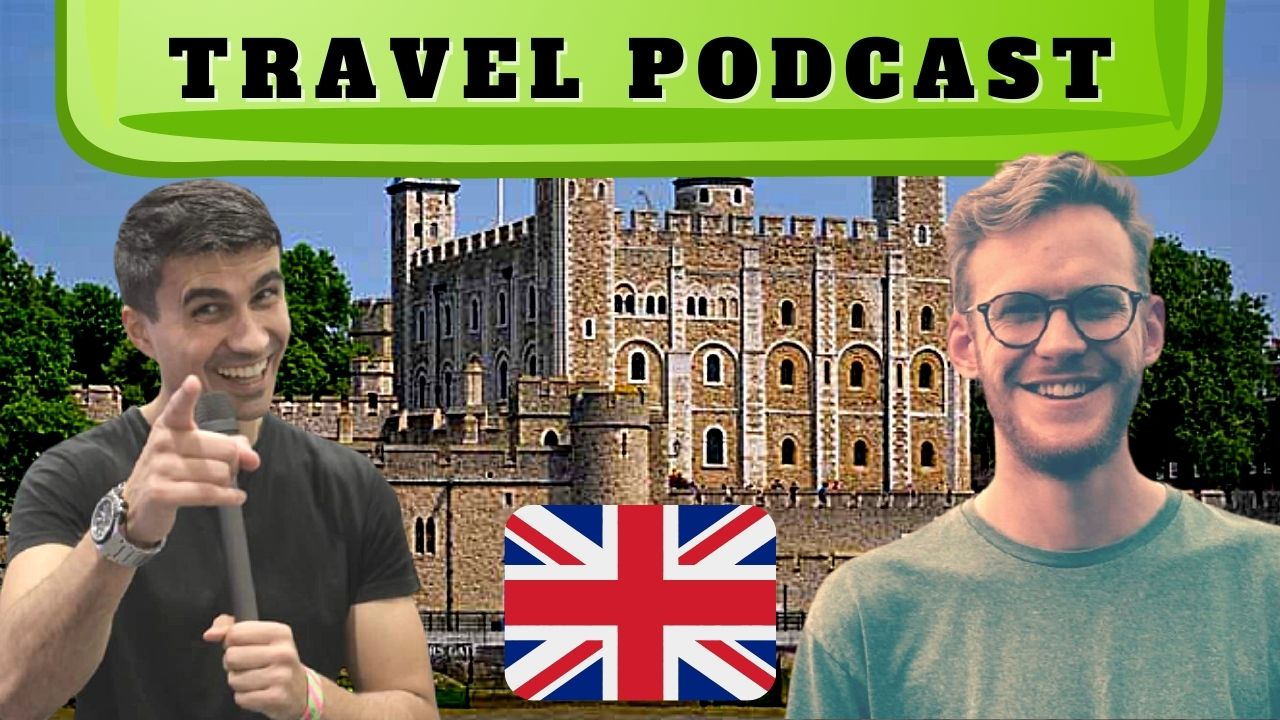

Tudor Buildings in London ► I always try to introduce you to curious people and Jack is the perfect example of one. I find similarities between me and Jack as we are both interested in what we are passing by, and we both want to share what we have learned with as many people as possible.
In this episode of the Curious Pavel Podcast Sessions, we speak about Jack’s favourite Tudor buildings that you can still see in London to this day.

What exactly is Tudor London?
If you’re not that familiar with English history, you may be a bit confused by what we mean by Tudor London.
The short answer is that Tudor London is the period of time between 1485, when Henry Tudor seized the English throne as Henry VII, and 1603, when the last of the Tudor monarchs, Queen Elizabeth I, died with no heirs, and the English throne passed to her closest relative, King James VI of Scotland.
So even though the Tudor period lasted little more than 100 years, it remains one of the most well-known and well-loved periods of British history. It is the time of Henry VIII and his 6 wives, the time of Shakespeare, and of the Reformation, and the time of Elizabeth I, whose reign is known as the Golden Age.

Fan of Listening? Here is the whole podcast episode

The Tudor Rose
The period immediately before the Tudors is the Wars of the Roses, when the York and the Lancastrian families were fighting for the throne. Each of the families are identified by a rose of a single colour: white for the Yorks and red for the Lancastrians.
The rose you see throughout this post is the Tudor Rose. You can find it on and in many Royal Tudor buildings around England (such as Hampton Court Palace near London, or King’s College Chapel in Cambridge). It symbolises the marriage of Henry VII and Elizabeth of York, combining their family roses (red and white) into one rose with both red and white together.
This rose symbolises that the Wars of the Roses are over, that peace has been restored by uniting these two families in this marriage, and that a new, glorious era has begun. In reality, this symbol said: “Look everyone, the Tudors are here to stay, we have a legitimate claim to this throne we took, and anyone who doesn’t like it better watch out, because we aren’t moving without a fight!” Ok. History lesson over… for now! 😆

Mentions in the Podcast
- Henry VII Chapel: part of Westminster Abbey and built in 1503 by Henry VII to help secure his legacy and claim to the throne
- St John’s Gate: built in 1504 and the only remaining part of the Clerkenwell Priory
- St Andrew Undershaft: A Tudor era church in the City of London with a great story behind the name!
- The Globe: a reconstruction of the original Globe theatre that would have been at the heart of Bankside: Tudor London’s entertainment district.
- St Bartholomew’s Gatehouse: A stunning Tudor gatehouse
- Tower of London – The Queen’s House- built in 1540 this was where the claimant to the throne Lady Arbella Stuart was imprisoned and died after going mad.

If you prefer your radio with pictures, this podcast about Tudor London is also on YouTube


About Jack
I’m Jack, I grew up in Essex, and London has always been a fascinating and exhilarating place to me. I was delighted to move to London properly in July 2020 after living in Bristol where I studied history at university.
I love history. I am a big fan of museums and books but, even more so, I am interested in the tangible, liveable, and breathable history we are surrounded by as we go about our everyday lives. I started my blog: Living London History so that I can share my journey discovering London’s fascinating and vibrant past by walking its streets and delving into its hidden corners and encouraging others to do the same!
Living London History includes hidden gems and self-guided themed historical walks to help Londoners and visitors explore this wonderful city.
Connect to Jack
- Website: https://livinglondonhistory.com
- Instagram: https://www.instagram.com/livinglondonhistory/
- Twitter: https://twitter.com/livinglondonhis
- Facebook: https://www.facebook.com/livinglondonhistory
- Tiktok: https://www.tiktok.com/@livinglondonhistory?


One Final Question…
Were you curious about the flag in the title? You know that the flag of the UK is 🇬🇧, right? So what is 🏴?! London is in the United Kingdom, innit?!
Fortunately, the video to answer this question is right below. Let young Curious Pavel be your guide:


Watch this video on YouTube


Thanks so much for reading this far. I really appreciate it, and hope you have enjoyed learning more about the history of London that you can still find on the streets today. Maybe it’s made you think about historical buildings that you can see in your area? In which case, job done! If you have any comments or suggestions, please say hi. Your comments are my oxygen. 🙏🏻

